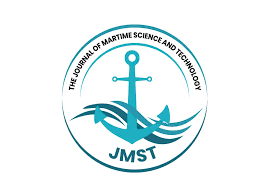Designing of a Ship Carbon Dioxide Emissions Monitoring Model and Blue Carbon Storage System for Green Shipping in Tanzania: A Case Study of Dar es Salaam Port
Keywords:
Greenport, Carbon dioxide emission, Blue carbon storage, MangroveAbstract
This study aims to design a ship carbon dioxide (CO2) emissions monitoring model to estimate the amount of CO2 emissions based on activities at Dar es Salaam port and incorporate with mangroves sequestration as a part of blue carbon storage to help mitigate air pollution. The assessment of the emissions considers three port activities: anchorage, maneuvering, and berthing. The bottomed-up model is the estimating technique employed by taking into consideration engine power, load factor, and fuel emission factor. Following that, the model was developed utilising machine learning techniques, particularly the linear regression method. The model was trained with Scikit Learn, and the data was stored in a PostgreSQL database through Django Python framework. A ship CO2 emissions monitoring system and the blue carbon storage (SCEMS) are the outcomes of the project. The results in CO2 emissions showed that there is a consistent relationship between the type of ship and the total CO2 emission. Ships that spent longer time at port exhibited higher CO2 emissions, accounting for 72% of the total estimated CO2 emissions compared to ships that spent shorter time. Tanker ships exhibited the highest rate of total CO2 emissions, contributing to 72% of the total emissions compared to other types of ships at Dar es Salaam Port. It was determined that 726,975 hectares of mangroves could trap the 610.4475 Mt of CO2 emissions that were predicted to occur yearly. This designed model presents a compressive solution to maritime CO2 emissions by not only quantifying emissions but also proposing a natural method for sequestration. Mangroves as part of blue carbon ecosystems are incredibly effective at absorbing CO2, making them a crucial ally in combating climate change. Furthermore, this discovery opens the possibility for ships or shipping companies to earn carbon credits through mangrove restoration projects. Each ton of CO2 sequestered can be converted into carbon credits which can be sold or traded on carbon markets, providing an economic incentive for emission reduction.Downloads
Published
04-05-2025
How to Cite
Suleiman Umande, A., & Kassenbe, E. (2025). Designing of a Ship Carbon Dioxide Emissions Monitoring Model and Blue Carbon Storage System for Green Shipping in Tanzania: A Case Study of Dar es Salaam Port. The Journal of Maritime Science and Technology (JMST), 1(1). Retrieved from https://journal.dmi.ac.tz/index.php/1DMI1/article/view/70
Issue
Section
Articles

